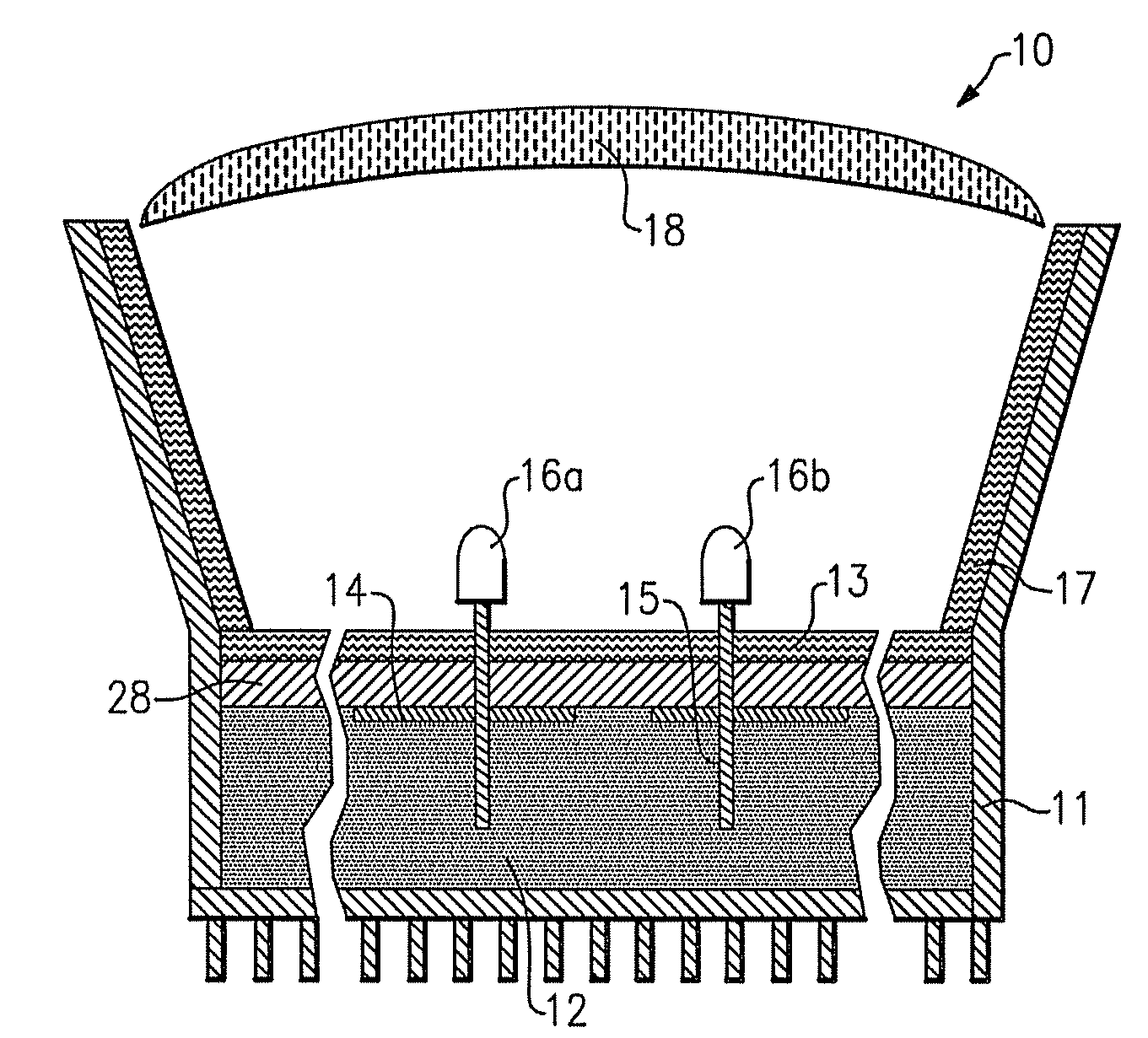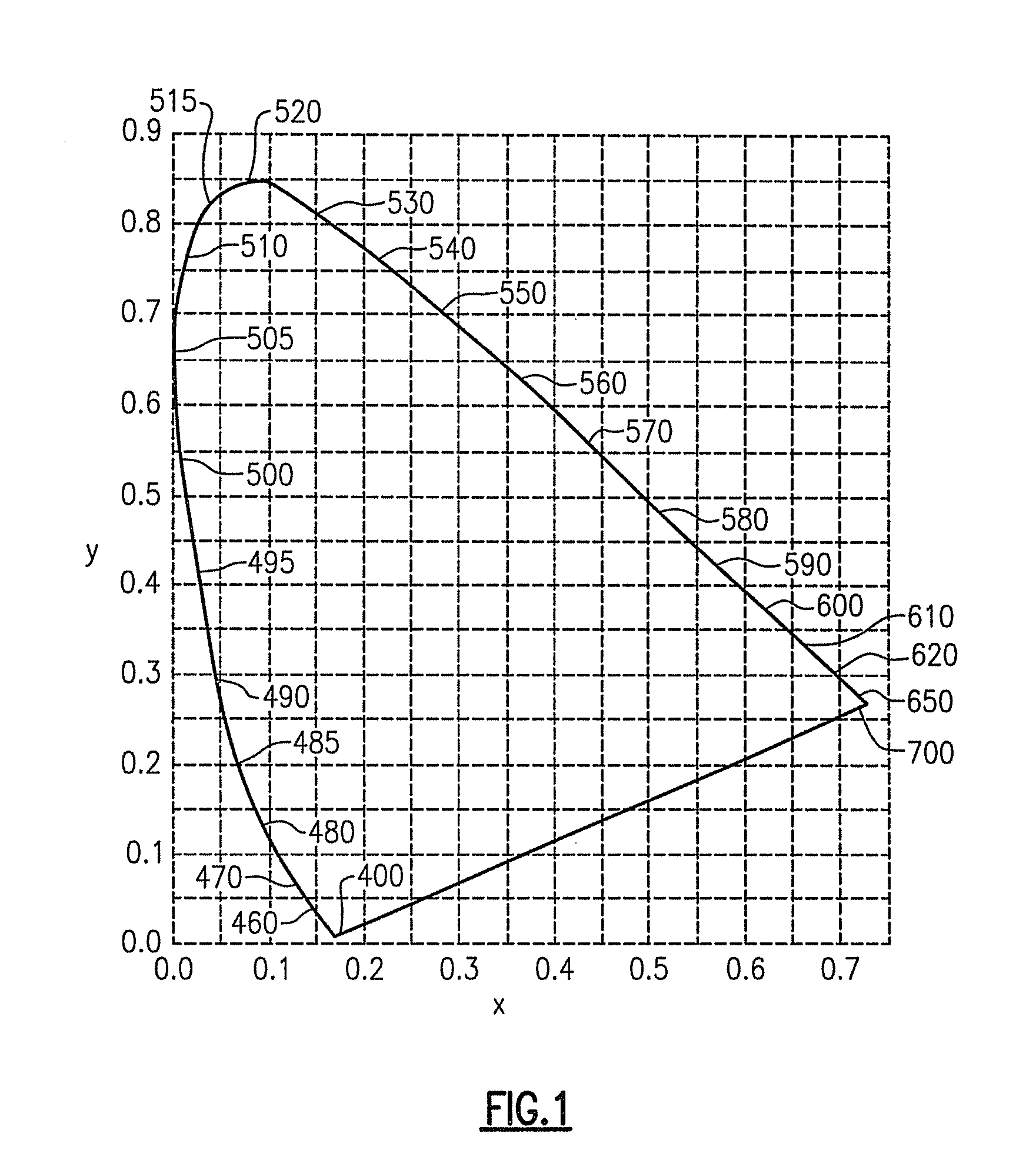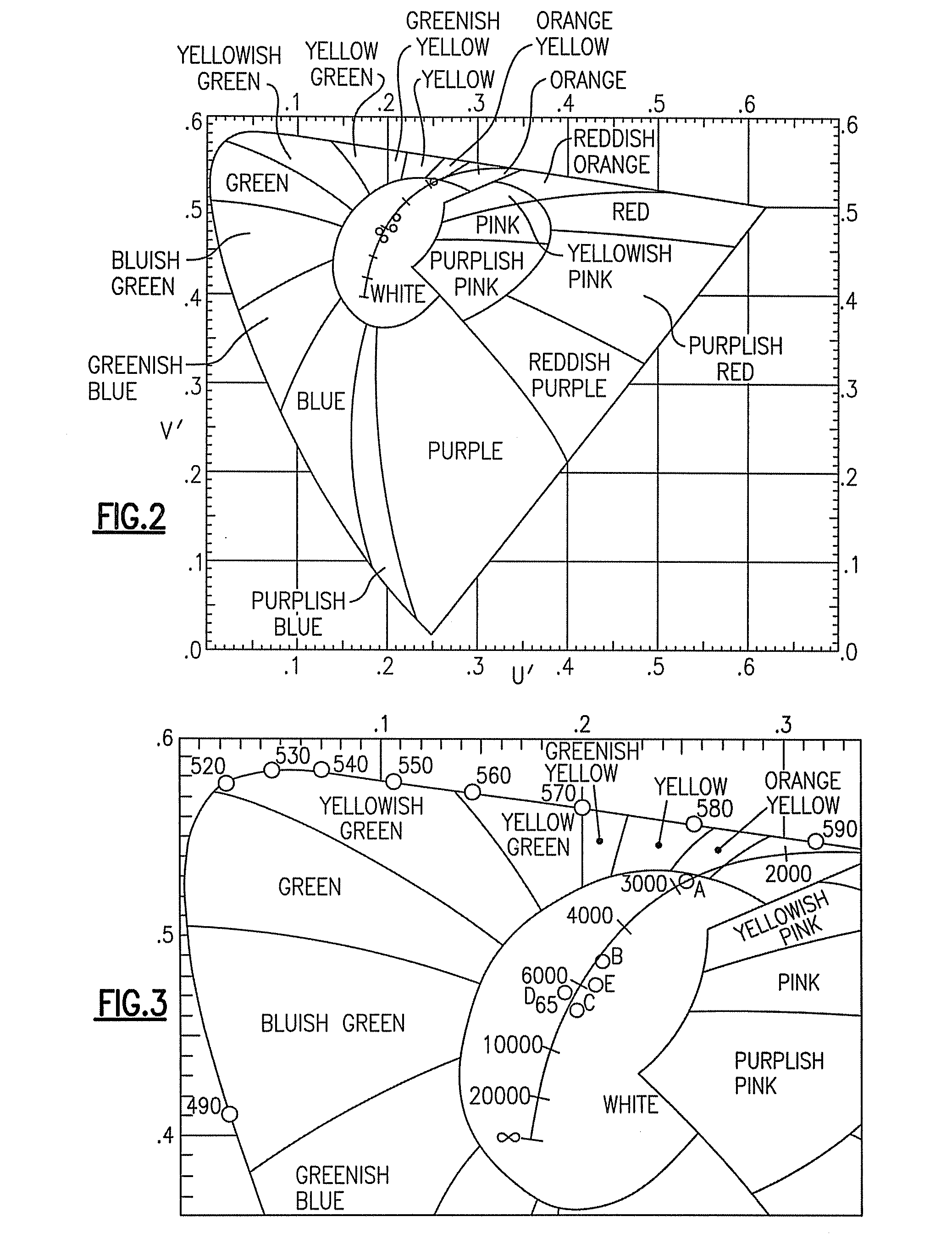Lighting device and lighting method
- Summary
- Abstract
- Description
- Claims
- Application Information
AI Technical Summary
Benefits of technology
Problems solved by technology
Method used
Image
Examples
first embodiment
[0195]FIG. 4 depicts a lighting device in accordance with the present inventive subject matter.
[0196]Referring to FIG. 4, there is shown a lighting device 10 which includes a heat spreading element 11 (formed of aluminum), insulating regions 12 (comprising any desired material which is thermally conductive and not electrically conductive, a wide variety of which are well-known to those skilled in the art, e.g., ceramic, epoxy or silicone optionally filled with silicon carbide, diamond, cubic boron nitride, alumina, etc), a highly reflective surface 13 (formed in situ by polishing the surface of the aluminum heat spreading element, or made of MCPET® (marketed by Furukawa, a Japanese corporation)), conductive traces 14 formed of copper, lead frames 15 formed of silver-plated copper (or silver-plated mild steel), a packaged LED 45 (described in more detail below), a reflective cone 17 (made of MCPET®) with a diffuse light scattering surface and a diffusing element 18 (the diffusing ele...
second embodiment
[0200]FIG. 6 depicts a lighting device in accordance with the present inventive subject matter. The device depicted in FIG. 6 includes a first packaged LED 16a and a second packaged LED 16b. The first packaged LED 16a (depicted in FIG. 7) includes an LED chip 31 and a lumiphor 35a. The LED chip 31, when illuminated, emits light having a peak wavelength in the near ultraviolet range. The first lumiphor 35a, when excited, emits light having a dominant wavelength in the range of from about 480 nm to about 490 nm. The second packaged LED 16b is similar to the first packaged LED 16a, except that instead of the first lumiphor 35a, the second packaged LED 16b includes a lumiphor which, when excited, emits light having a dominant wavelength in the range of from about 580 nm to about 590 nm.
third embodiment
[0201]FIG. 8 depicts a lighting device in accordance with the present inventive subject matter. The device depicted in FIG. 8 includes a packaged LED 16c. The packaged LED 16c is similar to the packaged LED 16a, except that instead of the first lumiphor 35a, the packaged LED 16c includes a lumiphor which contains a mixture of luminescent material which, when excited, emits light having a dominant wavelength in the range of from about 480 nm to about 490 nm and luminescent material which, when excited, emits light having a dominant wavelength in the range of from about 580 nm to about 590 nm
[0202]A fourth embodiment of a lighting device in accordance with the present inventive subject matter is similar to the device depicted in FIG. 6, except that instead of the first packaged LED 16a, the fourth embodiment includes a packaged LED 16b which includes (1) an LED chip which, when illuminated, emits light having a peak wavelength in the near ultraviolet range and (2) a lumiphor which, wh...
PUM
 Login to View More
Login to View More Abstract
Description
Claims
Application Information
 Login to View More
Login to View More - R&D
- Intellectual Property
- Life Sciences
- Materials
- Tech Scout
- Unparalleled Data Quality
- Higher Quality Content
- 60% Fewer Hallucinations
Browse by: Latest US Patents, China's latest patents, Technical Efficacy Thesaurus, Application Domain, Technology Topic, Popular Technical Reports.
© 2025 PatSnap. All rights reserved.Legal|Privacy policy|Modern Slavery Act Transparency Statement|Sitemap|About US| Contact US: help@patsnap.com



